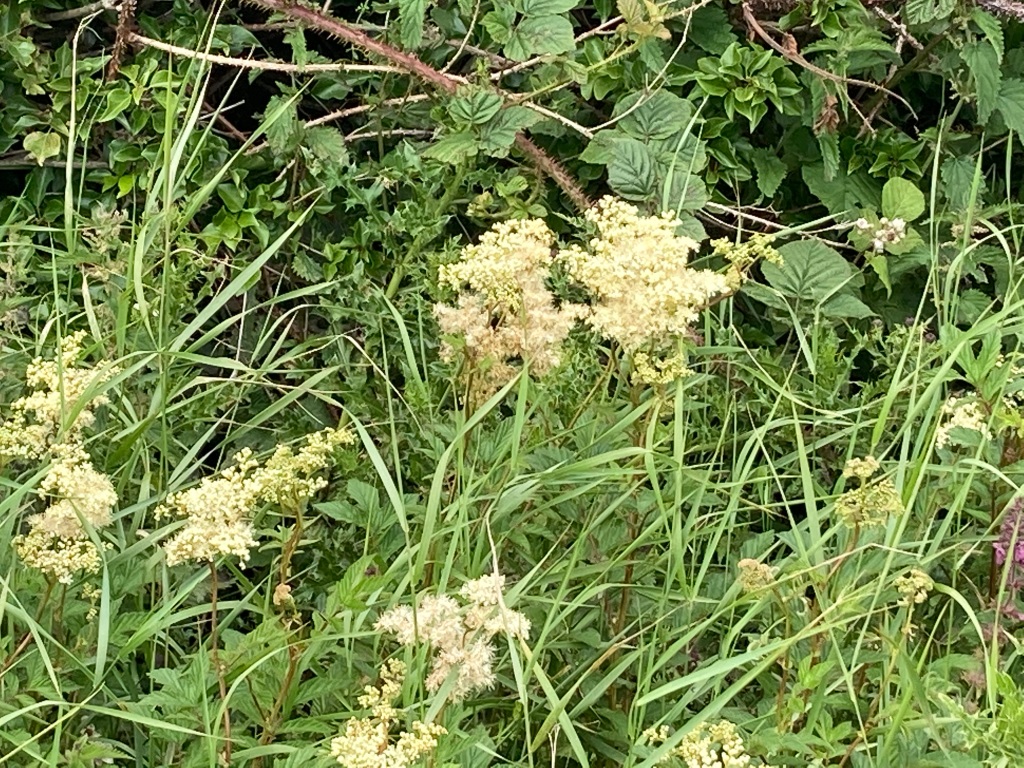
At it’s peak now, Meadowsweet (Filipendula ulmaria) flowers from June to September, and is common in damp meadows, ditches and road verges, by rivers and streams, growing to about 1.5m on reddish stems. . It is actually a member of the rose family, though the frothy clusters of cream-coloured flowers give no clue to this. Each tiny flower has 5-6 petals and male or female flowers are on separate plants. the flowers smell faintly of almonds and are an important pollen source for insects.
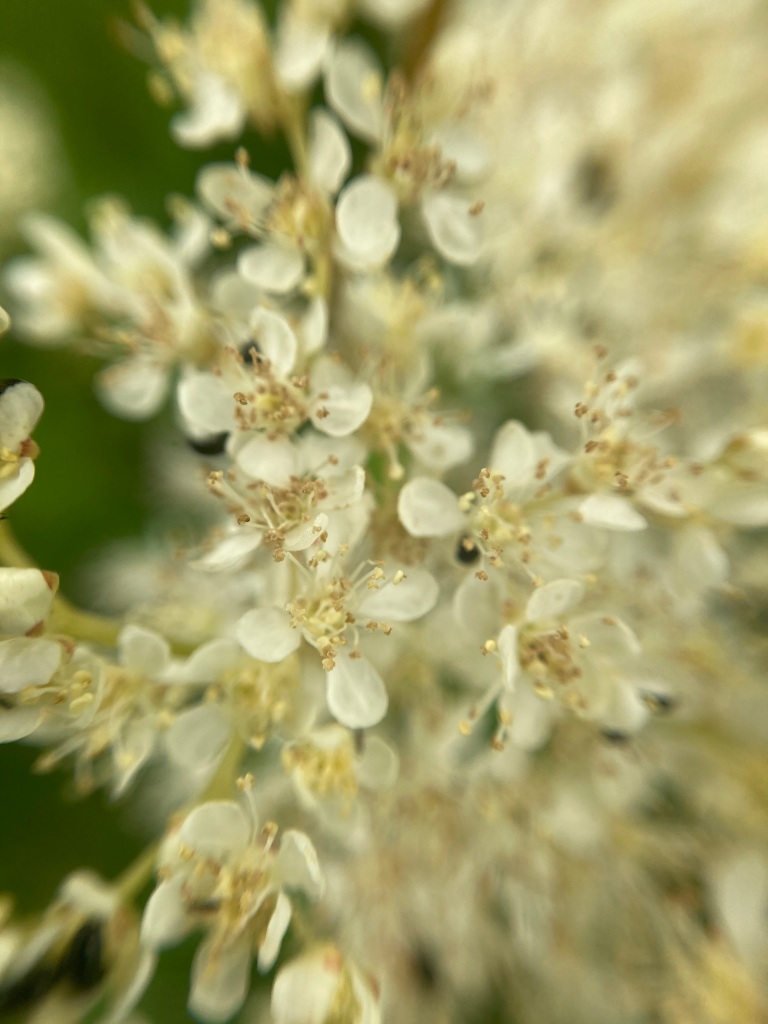
Found from Europe to the Middle East, the plant was introduced to America, where it has become naturalised.
The dark green leaves however are, more like those of the rose, set in pairs along a leaf stem, toothed and more heavily veined, with a silvery underside. When crushed they can have an antiseptic smell on top of the same almond notes of the flowers.
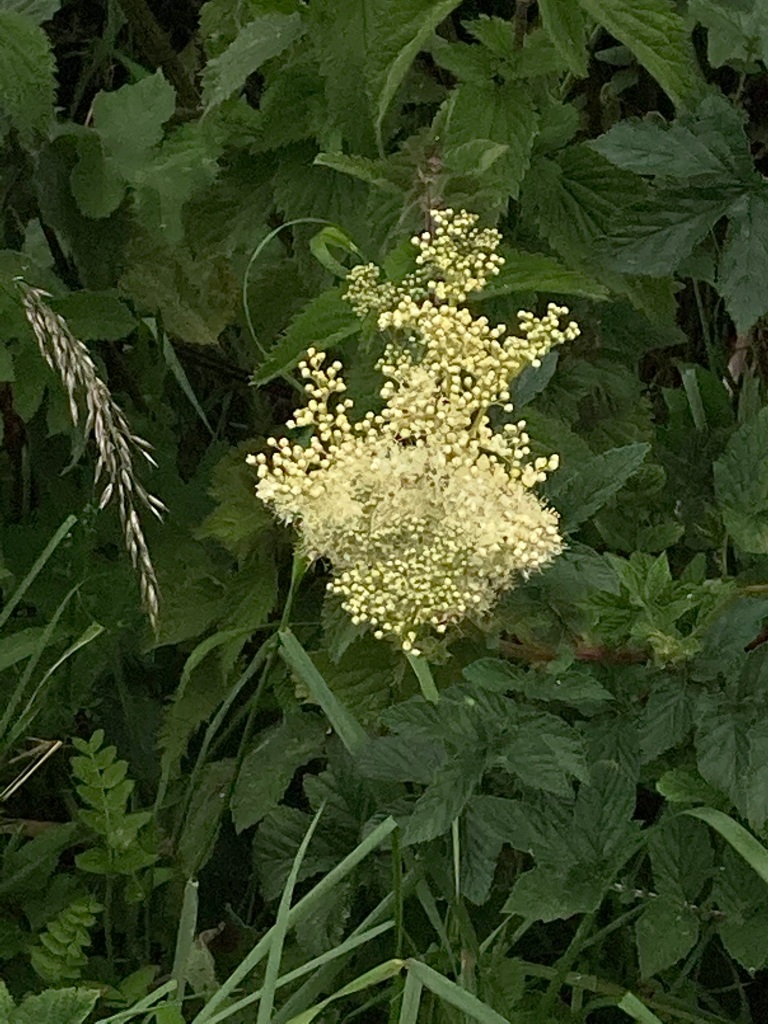
The plant has many names, some of which indicate it’s many uses through the ages. It was used as a strewing herb, thrown on the floor to cover the mud, provide insulation and a pleasant scent when trodden underfoot. The flowers were used to decorate banquets and for bridal garlands, giving rise to the name bridewort. The herbalist Gerard said that the scent “make the heart merrie, delighting the senses without headache or putting off meat”. Meadowsweet was said to have been a favourite of Elizabeth I.
Although the name Queen of the Meadow or Pride of the Meadow, would suggest that the plant is named for its habitat, the alternative of meadwort is thought to derive from the use of the flowers to flavour mead. It has been used to add flavour to port, claret and beer, gin, sloe gin, jam and various desserts – some sources recommend using it in the same way as elderflower to make cordials, liqueurs and “champagne”.The flowers and leaves retain a scent and flavour even when dried, enabling use all year round. The roots yield a black dye.
Herbalists have also found many uses for this plant. Culpeper used it for fevers, wounds and eye irritations. It has also been used for colds, bronchitis, upset stomachs, joint problems and for bladder infections. Modern science has found one of the reasons for its useful medicinal properties: it contains salicylic acid, also known as aspirin.
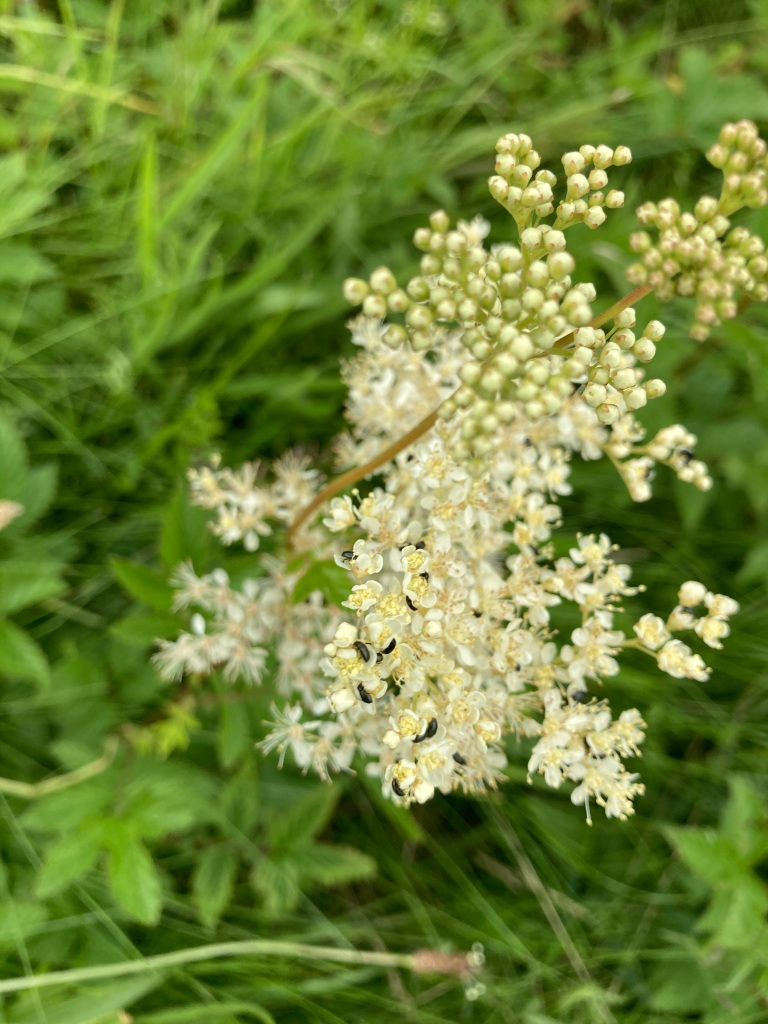
This really is a versatile plant with a fascinating history.Wildflower
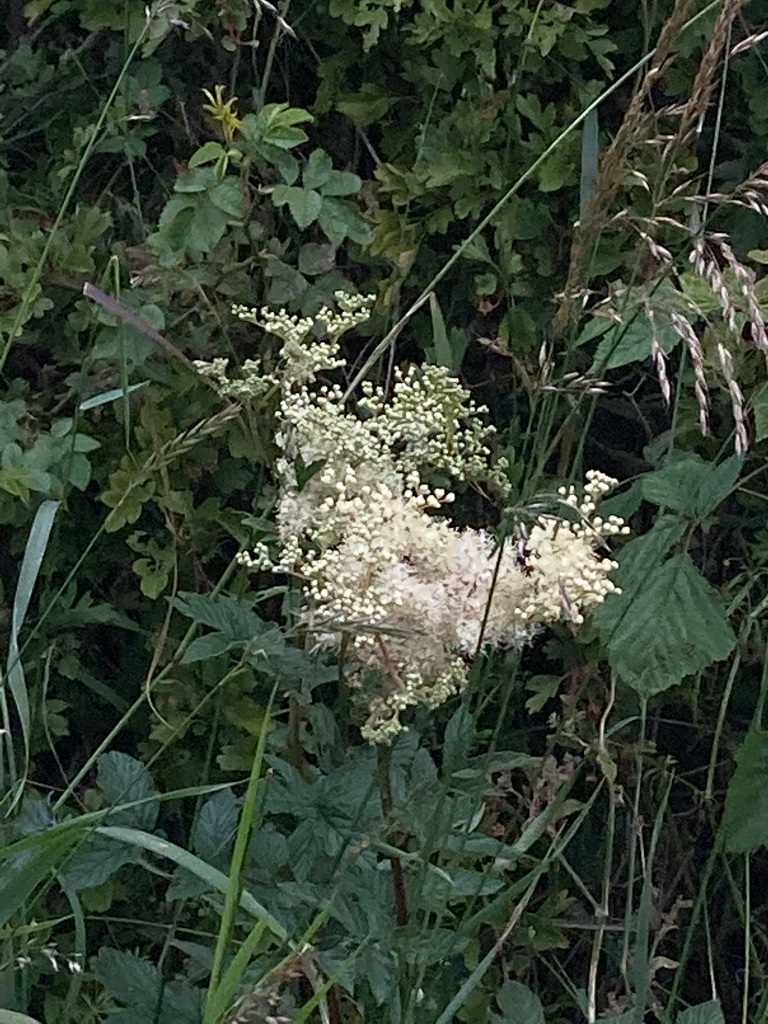

One of my favourite hedgerow plants. I have often wondered if it could be used in cordial as the flowers are so similar to elder.
LikeLiked by 1 person
Haven’t tried it, but will keep you posted if I do.
LikeLiked by 1 person
I will have to look out for meadowsweet round here. It is a plant whose name I have come across (possibly from reading novels about Elizabeth I) but I’m not familiar with it. I can see from the flowers that it it is in the rose family but from a distance it looks like one of the carrot family.
LikeLike